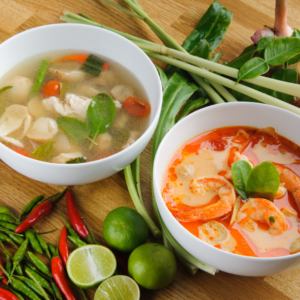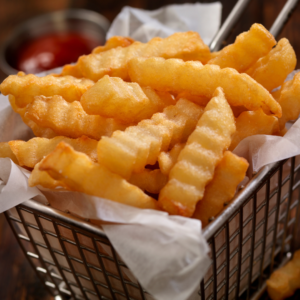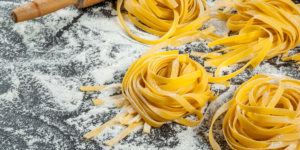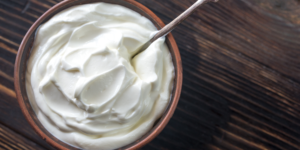Electrical cooking appliances make cooking seamless and quick. But you could compound the cooking stress if you don’t know how to use these appliances.
So you got gifted a rice cooker this Christmas but are unsure how to use it. Or maybe you have never heard of the appliance before. This article gives you a detailed introduction to the rice cooker and tells you how to use one.
A rice cooker is an automated kitchen appliance used for cooking rice. It is a sturdy piece of metal that consists of three parts: an outer pot that houses the controls and heating device, an inner pot where the actual cooking takes place, and a lid that is kept tightly on while cooking.
It often doesn’t need supervision when cooking is going on. Be careful not to mix it up with a pressure cooker. Pressure cookers have a slightly different method of operation and a more comprehensive use range.
A rice cooker creates heat through a heating device placed inside the container of the cooker. This heat generated boils the water and enables the rice to cook. The cooker also has a heat sensor that detects the temperature of the rice, regulating itself to either switch off or start a warming cycle, as necessary.
From the name, one can tell that a rice cooker is used for cooking rice. Many people think a rice cooker is only useful for cooking rice, so having one is unnecessary. But a rice cooker’s use goes beyond cooking rice. It can also be used for cooking other grains like lentils and beans. It can be used for steaming vegetables and cooking soups or stews. Some people even find it useful for poaching fruits and preparing meals like oats.
Why do you need a rice cooker?
A rice cooker is a good buy for many reasons. One of the reasons you need a rice cooker is its automated functioning.
There are days when you have a ton of work to do, and on such days, monitoring a pot of rice cooking on the gas is the last thing you want to do. Having a rice cooker saves you from such stress. With sufficient water in the cooker, the rice will boil to perfection without you having to lift a finger. You can carry out other activities while your rice cooks unsupervised.
Some newer appliance brands even have a feature that notifies you when the food is ready.
Rice cookers can also help keep your food warm for a long time, even as long as twelve hours! Using a traditional pot would require you to warm the rice at least every two to three hours to keep it warm and prevent it from going sour.
The time can even be shorter during cold seasons like winter or harmattan. But with a rice cooker, you can cook your meal the night before and still have it warm by the following morning.
The rice cooker is easy to use. You can have a nicely prepared bowl of rice without any training or expertise. There is also a low to zero risk of burning the food since the appliance regulates itself. This makes it one of the safest kitchen appliances that even a child can operate.
Types of rice cookers
There are two major types of rice cookers: the microcomputer-controlled or microprocessor (Micom) rice cooker and the induction heat (IH) rice cooker.
The Micom rice cooker is a small rice cooker that works by heating the cooker from the bottom. It is ideal for preparing only a small quantity of rice. This type of rice cooker is usually used by students or people who live alone because of its small capacity. It is also convenient and portable.

The IH rice cooker is the more commonly used type of rice cooker. This one has a heater that generates heat throughout the pan. That is, heat comes not only from the base of the pot but also from the sides. It is also much bigger than the MC rice cooker, having a capacity range of one to six liters.
How to use the rice cooker
The steps involved in using a rice cooker are simple, and following through with the steps will have you having a perfect bowl of rice all the time.
Determine how much rice you want to cook
The capacity of your rice cooker will determine the maximum amount of rice you can cook in it per time. It also depends on how much rice you want to cook. But here’s a tip: one cup of rice usually swells to about three cups when cooked. Having this in mind will guide your decision at this stage.

Rinse the rice
Some people prefer to cook their rice immediately without rinsing it because they intend to parboil it. However, parboiling rice with a rice cooker may not be convenient. Therefore, rinse the rice first with lukewarm water, then put it in the rice cooker for cooking.
This rinsing process ensures that any entrapped dirt is removed and reduces the rice’s starch content.

Add Water
Except you’re trying to roast your rice grains, you must add water to the cooker once you have put the rice in it. A typical amount of water used is one and a half cups for every cup of rice. But for a stickier or softer result, you can use up to two cups of water.
The same measuring technique applies if you’re using broth instead.

Add salt
This step is optional. Not everyone likes salt in their rice. But if you prefer salt in your rice, using a full teaspoon or half, depending on the quantity of the rice, is advised.
Another form of flavor enhancer often used is butter or cooking oil. About a tablespoon of this will give your rice a richer flavor and also give it a shiny appearance when served.

Stir
Giving your rice a good stir at this point enables an even distribution of the food’s salt (and other ingredients). It would be a disaster if one part of the food were salty and another bland.

Set the cooker
Some rice cookers have different settings for different types of meals. Select whichever option fits. Other rice cookers just have a power switch. This makes the process easier, as all you have to do is put on the switch, and the cooking begins.

Close the cooker
Ensure the cooker is well closed while cooking is ongoing. This prevents heat loss and quickens the cooking process.
The cooker goes off once your rice –or any other thing you’re cooking –is done. Give a five to ten-minute interval before opening the pot because of the steam. Steam of that temperature could give you scalds.

Care for your rice maker
Knowing how to use a rice cooker includes learning how to care for it. To prevent your rice cooker from getting damaged quickly or developing faults, it is necessary to handle it with care.
- Despite the flexibility of using a rice cooker, it is unsuitable for all foods. This appliance is not suitable for cooking foods like meat. It is also not ideal to boil milk in your rice cooker because milk tends to foam up while boiling and could also burn. This could cause damage to your cooker. An alternative for rice recipes that include milk is coconut milk. User reviews say this milk is safe for use in a rice cooker.
- Plastic spoons or non-stick utensils are advised when serving the food in the cooker. This is because spoons made of metal could scratch the rice cooker’s inner coating, destroying the inner pot’s non-stick nature. Wooden spoons are the safest option since they reduce the risk of carcinogenesis associated with plastics.

- Placing your rice cooker in a crowded place is not the safest option. Remember, this appliance generates heat. When there is not enough air circulating the cooker, hazards like sparking, explosion, and even fire could occur.
- Overloading the cooker should also be avoided to prevent spillovers while the cooking is ongoing. In cases where such happens, clean the area as soon as possible.
- Make sure to clean the inner pot after each use to prevent food from drying up in the pot. When this happens, you may be forced to use iron sponges or other aggressive means of removing this dried-up food debris. This eventually damages the inner pot of the cooker.

- Every electrical appliance, including the rice cooker, is prone to damage from an electrical surge. When your rice cooker is not in use, unplug it from the socket. If you notice any fault with the cord of the cooker (even if it is minor), make sure to have it repaired.











